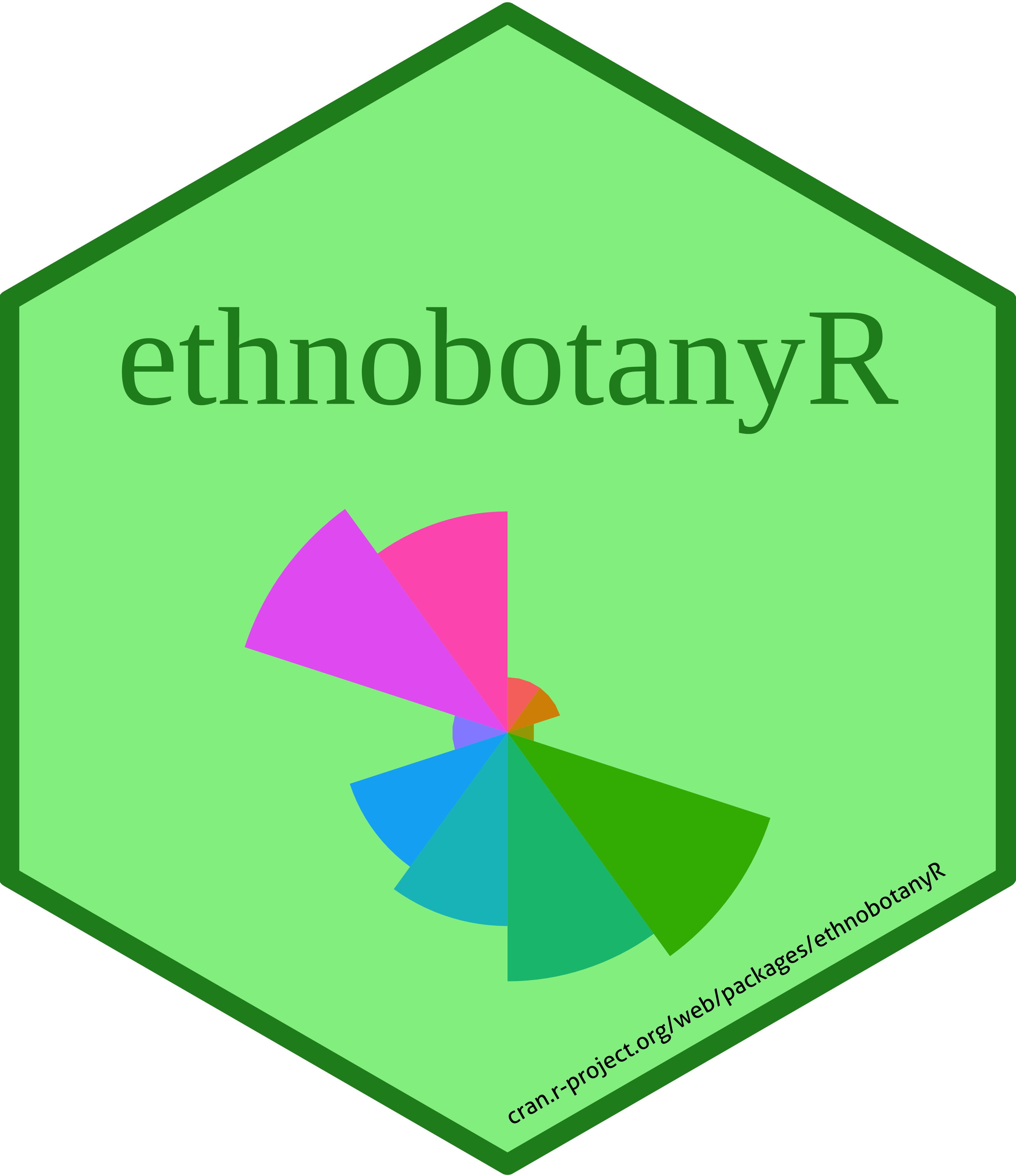

The goal of ethnobotanyR is to provide an easy-to-use platform for ethnobotanists to work with quantitative ethnobotany assessments. It closely follows Tardio and Pardo-de-Santayana (2008) and Whitney et al. (2018).
Users of ethnobotanyR may find it useful to read the background papers and books on ethnobotany theory. In particular Albuquerque et al. (2019) and Gaoue et al. (2017) offer helpful guidance to understanding theoretical approaches in ethnobotany and developing meaningful research questions.
| Quick Links |
|---|
| Installation |
| CRAN Version |
| Working with ethnobotanyR |
| ethnobotanyR Wiki |
Install the released version of ethnobotanyR from CRAN with install.packages("ethnobotanyR").
Install the working version of ethnobotanyR from GitHub with devtools::install_github("CWWhitney/ethnobotanyR").
Albuquerque, Ulysses Paulino, Patricia Muniz de Medeiros, Washington Soares Ferreira Junior, Taline Cristina da Silva, Rafael Ricardo Vasconcelos da Silva, and Thiago Goncalves-Souza. 2019. Social-Ecological Theory of Maximization: Basic Concepts and Two Initial Models. Biological Theory. doi.org/10.1007/s13752-019-00316-8.
Gaoue, Orou G., Michael A. Coe, Matthew Bond, Georgia Hart, Barnabas C. Seyler, and Heather McMillen. 2017. Theories and Major Hypotheses in Ethnobotany. Economic Botany 71: 269–287. doi.org/10.1007/s12231-017-9389-8.
Tardio, J., and M. Pardo-de-Santayana, 2008. Cultural Importance Indices: A Comparative Analysis Based on the Useful Wild Plants of Southern Cantabria (Northern Spain) 1. Economic Botany, 62(1), 24-39. doi.org/10.1007/s12231-007-9004-5.
Whitney, C. W., Bahati, J., and Gebauer, J. (2018), Ethnobotany and agrobiodiversity; valuation of plants in the homegardens of southwestern Uganda. Ethnobiology Letters, 9(2), 90-100. doi.org/10.14237/ebl.9.2.2018.503.